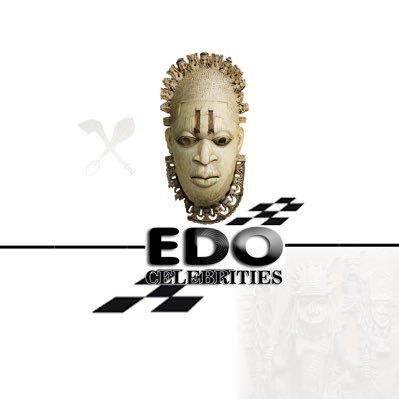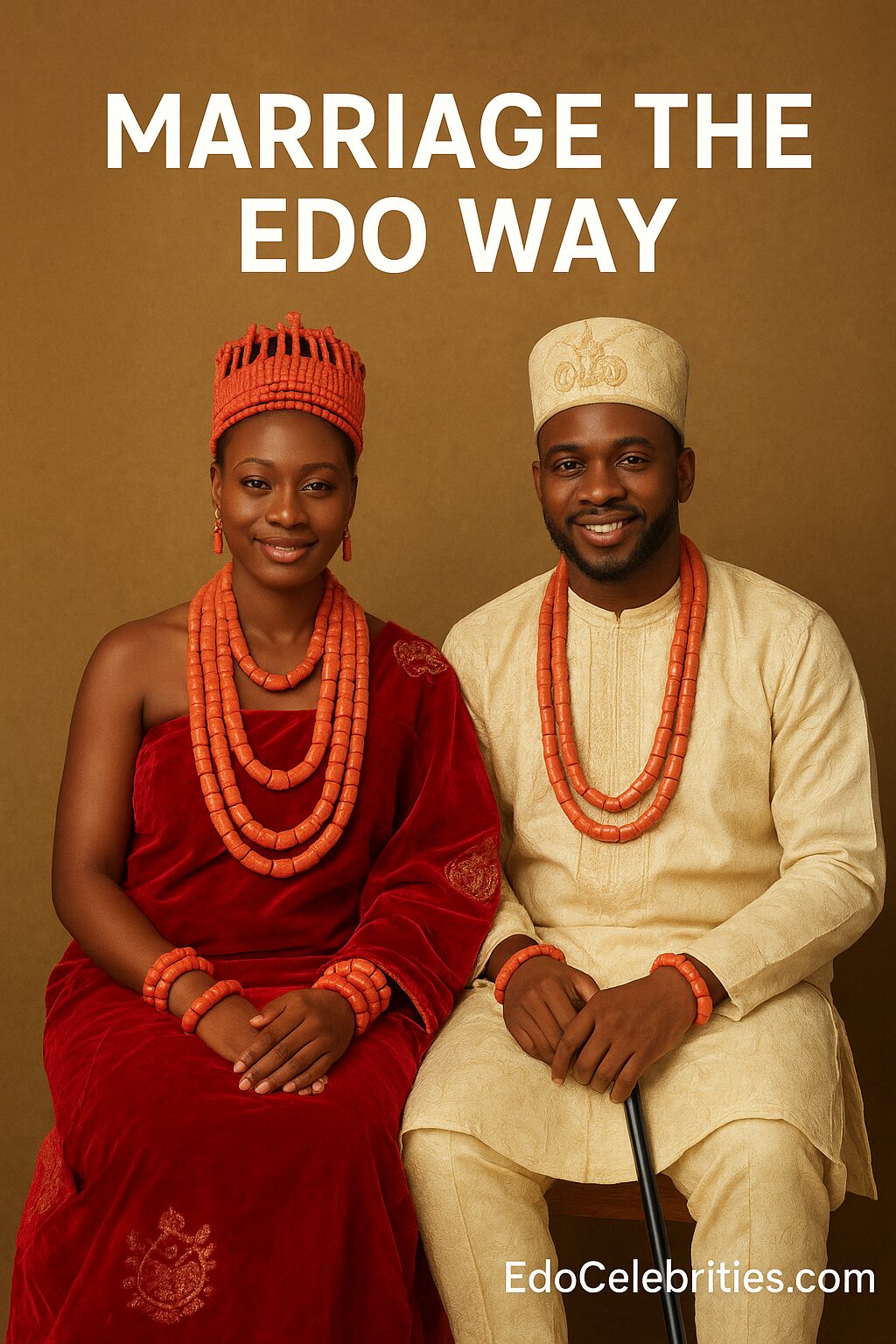The Beauty and Depth of Edo Traditional Marriage
Marriage in Edo culture is not just a union between two lovers—it is a sacred merging of families, lineages, and heritage. From the first introductions to the vibrant traditional attire, the Edo marriage ceremony reflects centuries of custom, pride, and respect.
Unlike Western weddings, Edo traditional marriage ceremonies emphasize ancestral blessings, family unity, and community involvement. It’s a vibrant celebration where love meets culture, and every ritual carries meaning.

Step 1: The Introduction – “Isee”
The journey begins with the introduction ceremony, known as Isee. This is when the groom’s family visits the bride’s home to formally express their intentions.
The atmosphere is warm and filled with laughter, kola nuts, palm wine, and cultural pleasantries. Both families exchange greetings, and the bride’s family symbolically “acknowledges” the proposal, marking the start of formal courtship.
It’s also during this stage that both families begin subtle inquiries—checking the character, health, and family history of the couple to ensure compatibility and good lineage.
Step 2: The Bride Price Negotiation
Next comes the bride price, one of the most symbolic aspects of Edo marriage. Contrary to misconceptions, the bride price is not a “purchase” of the woman—it is a token of appreciation to the bride’s family for raising her well.
Traditionally, elders from both sides negotiate the list, which includes items like kola nuts, palm wine, yam tubers, and symbolic amounts of money. Once agreed upon, the groom presents them to the bride’s father, who offers prayers and blessings.
Many modern families now accept symbolic payments, focusing instead on the union’s love and mutual respect.
Step 3: The Traditional Wedding Day
The main traditional wedding ceremony is a colorful affair that captures the essence of Benin royalty. Guests gather at the bride’s family compound, where the event begins with prayers and cultural performances.
The bride, adorned in regal Edo coral beads—okuku headpiece, ivie necklaces, ekorodo bangles, and richly woven velvet wrappers—takes center stage. She is the true reflection of Benin beauty and pride.
The groom often appears in a white or cream George wrapper, etibor shirt, coral beads, and a walking stick, exuding confidence and nobility. Together, they embody the union of grace and strength.
Step 4: The Palm Wine Presentation
One of the most emotional moments is the palm wine ceremony. The bride, holding a calabash of palm wine, searches through the crowd to find her husband. Once she locates him, she kneels and offers him the wine—symbolizing loyalty, love, and recognition.
When the groom accepts and drinks, the crowd erupts in cheers, and the union is sealed with blessings from both families.
This ritual signifies that the bride has freely chosen her husband in the presence of witnesses and ancestors.
Step 5: Blessings and Celebration
After the formalities, elders from both families offer prayers for fertility, prosperity, and lasting peace in the marriage. The newlyweds are presented to the gathering as husband and wife.
Music, dance, and traditional delicacies follow—pounded yam, pepper soup, banga stew, and palm wine flowing freely. The ceremony often extends late into the night as relatives, friends, and community members celebrate the joining of two proud Edo families.
The Meaning Behind the Customs
Every element of the Edo marriage carries deep meaning:
-
Coral beads symbolize purity, wealth, and royalty.
-
Palm wine represents love, trust, and commitment.
-
Kola nuts signify unity and respect for tradition.
-
The bride price demonstrates appreciation, not ownership.
For Edo people, these customs are not outdated rituals—they are living symbols of identity and continuity.
Modern Touches, Timeless Tradition
Today, many couples blend modern elegance with ancient tradition. Some hold their Edo traditional marriage in lavish event centers, while others return to their ancestral homes for authenticity.
What remains constant is the reverence for heritage and the pride that comes with celebrating “the Edo way.” Whether simple or grand, each wedding remains a vibrant declaration of love, culture, and belonging.
Conclusion
An Edo traditional marriage is more than an event—it’s a cultural story written in color, music, and symbolism. It reminds every couple that love thrives best when rooted in respect, community, and tradition.
So, before you say “I do,” take a moment to understand the beauty behind each custom. Because in Edo land, marriage isn’t just about two hearts—it’s about two histories becoming one.


Leave a Reply